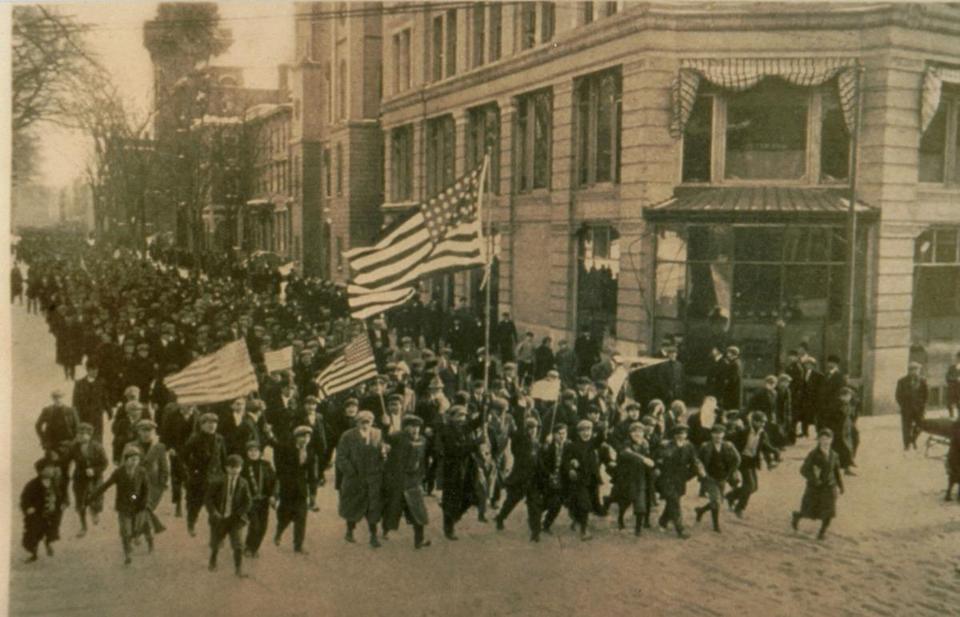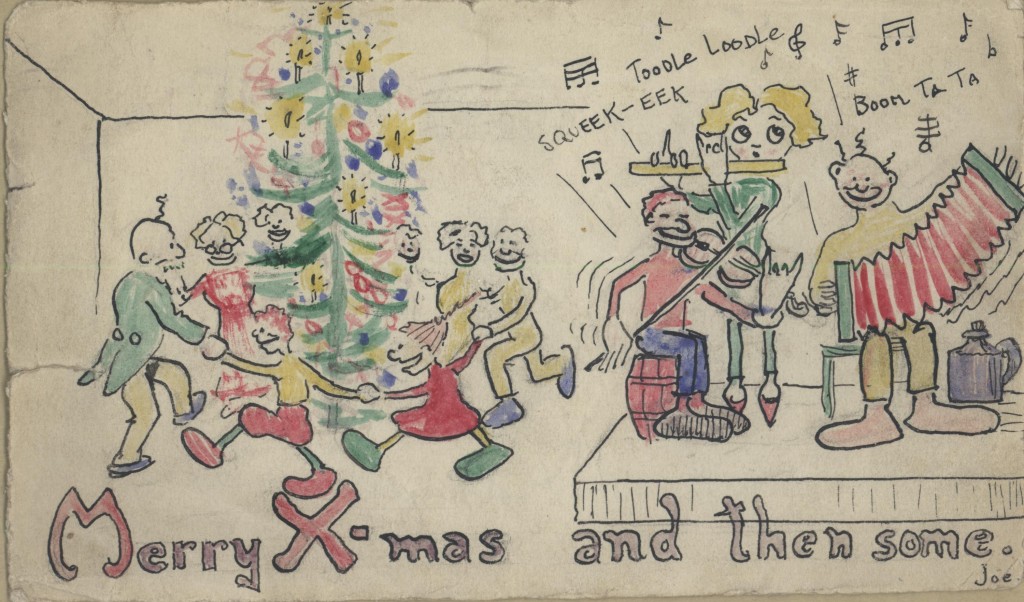Today marks the 100th anniversary of the Bread and Roses Strike in Lawrence, Massachusetts – a formative moment in American Labor history, and an inspiration to workers and lovers of liberty to this day.
Solidarity!

Bread and Roses a Hundred Years On. [Industrial Worker] – Though 100 years have passed, the Lawrence strike resonates as one of the most important in the history of the United States. Like many labor conflicts of the 19th and early 20th centuries, the strike was marked by obscene disparities in wealth and power, open collusion between the state and business owners, large scale violence against unarmed strikers, and great ingenuity and solidarity on the part of workers. In important ways, though, the strike was also unique. It was the first large-scale industrial strike, the overwhelming majority of the strikers were immigrants, most were women and children, and the strike was guided in large part by the revolutionary strategy and vision of the Industrial Workers of the World (IWW).
100 years later, Bread and Roses strike still resonates. [The Boston Globe] – The Bread and Roses Strike, not only called attention to horrific conditions in the mills, but also to the concentration of wealth and power in the United States,an issue that 100 years later would spur protesters to Occupy Wall Street, Boston, and other cities across the country.
100 Years After Lawrence Strike, the Cry for ‘Bread & Roses’ Still Resonates. [In These Times] – The strike that started on January 12, 1912, created political tremors far beyond the Merrimack Valley. The shutdown of mills in Lawrence forced a national debate about factory conditions, child labor, the exploitation of immigrants and the free exercise of First Amendment rights during labor disputes.
Bread and Roses: The 1912 Lawrence textile Strike. [Joyce Kornbluh, The Lucy Parsons Project] – Early in January 1912 I.W.W. activities focused on a dramatic ten-week strike of 25,000 textile workers in Lawrence, Massachusetts. It became the most widely publicized I.W.W. conflict, acquainting the nation with the plight of the unskilled, foreign-born worker as well as with the organization’s philosophy of radical unionism. “Lawrence was not an ordinary strike,” wrote Brissenden in 1919, “It was a social revolution in parvo.”
100 Year Anniversary of Bread and Roses Strike. [Uprising Radio] – Given today’s economic climate and the rising opposition to wealth inequality in the US, the history of the Bread and Roses strike of 1912 is particularly relevant.
Remembering the Fight and Spirit of “Bread and Roses.” [Common Dreams] – The strike lasted for two months. The workers marched daily, singing union anthems, and later listening to organizers. They faced clubs, bayonets, and frequent arrests. Many were hauled off to jail, children in tow. One, Annie LoPizzo, was shot and killed by the police.
Documentary Shows Strike “From The Workers’ Point of View.” [Merrimack Valley Eagle Tribune] – Making movies and local history are close to Tom Gradzewicz’s heart. He has combined his two passions to create “The Strike Heard ‘Round the World: Bread & Roses 1912,” which will be broadcast on community access television stations throughout Greater Lawrence.
A Century of Writing on the IWW. [IWW.ORG] – An annotated bibliography prepared for the IWW Centennial in 2005.
Bread & Roses Centennial Committee Website
Bread and Roses/Makhnes Geyen. [Boston Workmen’s Circle A Besere Velt (A Better World) Yiddish Chorus] – A stirring performance at the Rosenberg Fund for Children’s “Celebrate the Children of Resistance” event in Boston, June 19, 2007. The song is a ballad from the 1912 Lawrence, MA textile strike, woven together with an anthem dedicated to the fighters in the Spanish Civil War. “The masses are marching in the struggle for victory.”


